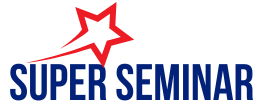In the fast-paced world of SaaS, standing out from the crowd can feel like trying to find a needle in a haystack. With countless competitors vying for attention, having a killer SEO strategy isn’t just a nice-to-have; it’s a must. But don’t worry—crafting a winning approach doesn’t have to be as daunting as it sounds.
Table of Contents
ToggleUnderstanding SaaS SEO Strategy
SaaS SEO strategy focuses on optimizing the online presence of Software as a Service companies. Successful execution leads to increased visibility and customer engagement.
What Is SaaS SEO?
SaaS SEO involves implementing techniques tailored specifically for SaaS businesses. This approach encompasses keyword research relevant to software solutions, optimizing website content for search engines, and enhancing user experience. Effective SaaS SEO targets both potential customers and search algorithms with a clear content plan. Using actionable content showcases product features and benefits, fostering engagement. Incorporating on-page and off-page SEO tactics builds authority and trust among audiences.
Importance of SEO for SaaS Companies
SEO for SaaS companies serves as a crucial driver of growth and market reach. High organic search rankings increase brand visibility, leading to higher website traffic. Compelling SEO attracts qualified leads who actively seek solutions, improving conversion rates. Over 70% of users prefer organic results over paid listings, showcasing the value of an effective strategy. Using analytics helps identify trends and refine content, ensuring alignment with audience needs. With strong SEO practices, SaaS companies build credibility and establish a competitive edge in a crowded marketplace.
Key Components of a Successful SaaS SEO Strategy
Developing a successful SaaS SEO strategy involves several essential components that enhance visibility and engagement. Focusing on these key areas creates a strong foundation for growth.
Keyword Research for SaaS
Keyword research serves as the backbone of an effective SEO strategy. Identifying relevant keywords guides content creation and optimization. SaaS companies should target specific phrases reflecting customer needs, which aids in reaching the right audience. Utilizing tools like Google Keyword Planner and Ahrefs enables businesses to discover high-traffic terms and analyze competition. Prioritizing long-tail keywords often leads to better conversion rates, as they attract users ready to purchase.
On-Page SEO Techniques
On-page SEO techniques play a crucial role in optimizing individual web pages. Implementing title tags and meta descriptions enhances click-through rates. Formatting content with header tags makes it more accessible for both users and search engines. Integrating internal links fosters better website navigation, while using alt text for images improves visibility in image searches. Focusing on page speed and mobile-friendliness ensures a user-friendly experience, contributing to higher search rankings. Each of these elements works together to strengthen the overall SEO strategy.
Content Marketing and SaaS SEO
Content marketing plays a critical role in enhancing SaaS SEO. High-quality content attracts potential customers while satisfying search algorithms.
Creating Valuable Content
Creating valuable content centers around understanding audience needs and preferences. Identifying pain points helps address specific challenges through targeted solutions. Engaging blog posts, informative guides, and tutorials establish authority and encourage engagement. According to studies, companies prioritizing valuable content experience higher engagement rates. Crafting content around specific keywords increases visibility in search results. Emphasizing practical tips and actionable insights enhances relevance, keeping readers interested. Regularly updating content also maintains freshness and keeps it relevant in search queries.
Leveraging Blog Posts and Case Studies
Leveraging blog posts and case studies reinforces a SaaS company’s credibility. Blog posts serve as platforms for sharing expertise and valuable insights. In-depth case studies illustrate real-world applications of a product, demonstrating success stories. Each blog can target specific keywords, driving organic traffic towards the site. Providing detailed analytics enhances understanding of user interaction and interests, allowing for optimization of future content. Case studies often contain testimonials, which build trust among potential clients. Posting consistently increases visibility and engages users, leading to better SEO performance.
Technical SEO for SaaS Platforms
Technical SEO is vital for enhancing the functionality of SaaS platforms. Prioritizing this aspect improves user experience, boosts search ranking, and ultimately drives traffic.
Site Speed and Performance
Site speed directly impacts user satisfaction and search engine rankings. Aiming for a load time of under three seconds significantly reduces bounce rates, which can be as high as 40% for slower sites. Compressed images, minimized scripts, and efficient coding enhance performance effectively. Regularly monitoring site speed through tools like Google PageSpeed Insights provides actionable insights for improvement. Investing in a reliable hosting solution strengthens stability and performance, ensuring a seamless experience for users.
Mobile Optimization
Mobile optimization is essential, given that over 50% of global web traffic comes from mobile devices. Creating a responsive design that adapts to various screen sizes ensures accessibility for all users. Implementing fast-loading mobile page designs enhances user interaction, reducing bounce rates. Utilizing mobile-friendly navigation simplifies user journeys, improving engagement. Testing for mobile usability with Google’s Mobile-Friendly Test identifies areas needing attention, which can help boost the site’s search visibility.
Measuring the Success of SaaS SEO Strategy
Measuring the success of a SaaS SEO strategy involves several essential metrics. Focusing on key performance indicators (KPIs) helps gauge effectiveness and informs strategic adjustments.
Key Performance Indicators (KPIs)
Organic traffic serves as a primary measure, with increases indicating better search visibility. Conversion rate is equally important; it quantifies how many site visitors complete desired actions. Bounce rate reflects user engagement and content relevance, making it crucial for optimization. Tracking keyword rankings shows progress in achieving targeted search positions. Additionally, examining backlinks provides insights into authority and trustworthiness. These metrics collectively help SaaS businesses assess the strength of their SEO strategies.
Tools for Tracking SEO Metrics
Multiple tools can track SEO metrics effectively. Google Analytics stands out, as it offers comprehensive insights into user behavior and traffic sources. SEMrush provides competitive analysis, helping identify gaps and opportunities. Ahrefs is instrumental in monitoring backlinks and keyword rankings. Moz offers valuable data on domain authority, enhancing understanding of website performance. Finally, Google Search Console provides essential data regarding search visibility and indexing status. Utilizing these tools equips SaaS companies with the data needed to refine their SEO strategies.
Conclusion
A well-crafted SaaS SEO strategy is essential for standing out in a crowded digital landscape. By focusing on targeted keyword research and creating valuable content, SaaS companies can engage their audience effectively. Implementing technical SEO practices and ensuring mobile optimization further enhances user experience and search visibility.
Monitoring key performance indicators allows businesses to assess their strategies and make data-driven adjustments. As the digital marketplace continues to evolve, staying ahead with a robust SEO approach will not only drive organic traffic but also foster long-term growth and credibility. Embracing these strategies positions SaaS companies for success in attracting and retaining customers.




